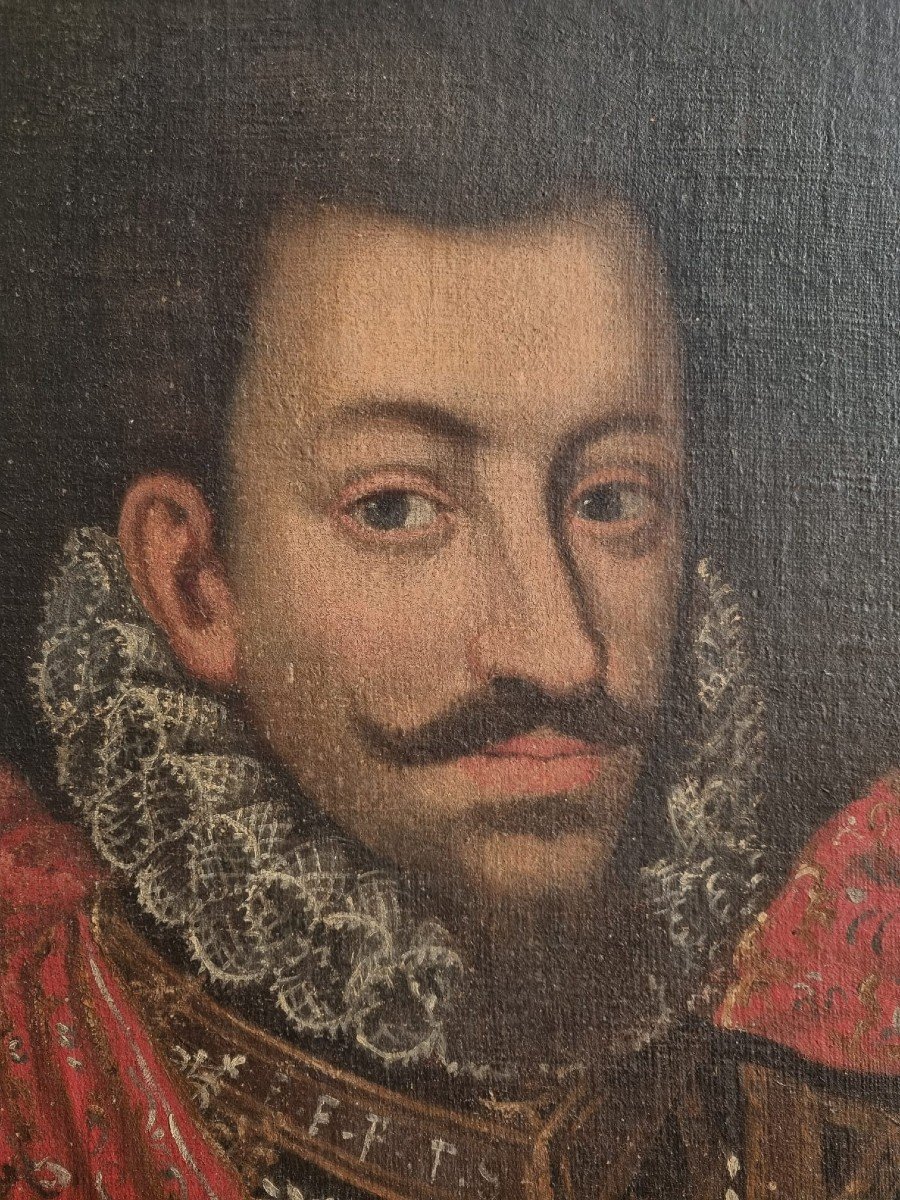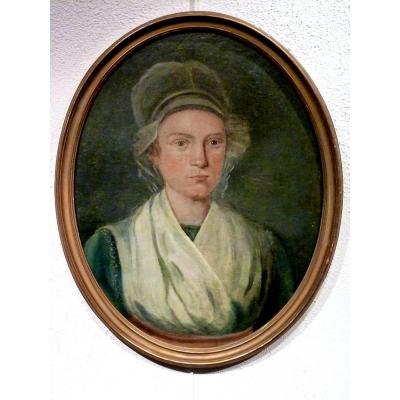This 17th century portrait is probably from a Spanish school close to the famous course painter Pantoja de Cruz.
The Duke of Savoy is represented here in armor with a posture of three quarters, he wears the large strawberry in lace typical of the late sixteenth century.
The Prince of Piedmont is named above: “CARLO DVCHADI SAVOGIA”
The portrait is in very good condition, it was previously returned.
Small defect on the slice (see photos).
Dimensions: 60 x 47 cm
Juan Pantoja de La Cruz (1553 - 1608)
He is a pupil of court painter Alonso Sánchez Coello in Madrid and must have helped his master to conform to his duties as painter of the Spanish king Philip II. Pantoja probably continues to work in his master’s studio after completing his training. Married in 1585, he began painting for the court at that time. After the death of Sánchez Coello in 1588, Pantoja took over the workshop of his master and became a painter of the court of Philip II of Spain.
He continued to work for the court and the nobility and painted portraits of Prince Philip, the future Philip III, in 1592 and 1594.
Juan Pantoja de la Cruz painted a large number of state portraits with the combined forces of his workshop, his servants, his apprentices and his collaborators. He is above all a portrait painter attached to the royal family (whom he accompanies during trips to Valladolid, Burgos, Lerma and Escurial) and to the high aristocracy.
Charles-Emmanuel 1st (1562-1630) Duke of Savoy and Prince of Piedmont.
Charles-Emmanuel succeeded his father at the age of 18 in 1580. One of his first acts was to break with Geneva with the goal of winning back the Chablais. The shots from Thonon in 1581-82 are a failure. The young prince married Catherine of Spain, the youngest daughter of King Philip II.
Henceforth allied to the powerful Spain by his marriage, he took advantage of the Wars of Religion that devastated neighbouring France, prepared his candidacy for the throne of France as grandson of King Francis I, seized the Marquisate of Saluces (1588) and received from the French Ligurians the title of Count of Provence (1590). It invaded the Dauphiné many times and even grew to Fréjus in 1590, seizing Draguignan and Aix, but it was beaten on September 17, 1591 in Pontcharra by Lesdiguières. He again attacked French possessions and took the fort of Exilles in 1593.
The Marquisate de Saluces becomes definitely a possession of the House of Savoy.
We admired his courage, his military skills and his finesse in negotiating. The dukes of Savoy placed between two rival great powers, equally eager to dominate Italy, would have infallibly succumbed under their efforts, if they had not supplemented the force with skill. Thus, having himself married a Spanish infante, he married his heir to Christine de France, sister of King Louis XIII.
Charles-Emmanuel extended his borders, rounded up his provinces, finished destroying feudalism in his states, and developed the system that Emmanuel-Philibert had prepared. He refocused monetary production in Piedmont, especially in Turin.
His military genius enabled him to carve out a major place for himself on the world stage, the first of the peninsula dynasties to forge the destiny of a unified Italy. And his dangerous policy of the precipice, which more than once failed to tip his states into the abyss, was pursued with constancy by his successors until finally, at the beginning of the 18th century, the crown so coveted.
Photos are taken in natural light.
Neat packaging.
Shipping costs borne by the buyer.
I remain at your disposal for any further information and photos.
























 Le Magazine de PROANTIC
Le Magazine de PROANTIC TRÉSORS Magazine
TRÉSORS Magazine Rivista Artiquariato
Rivista Artiquariato
